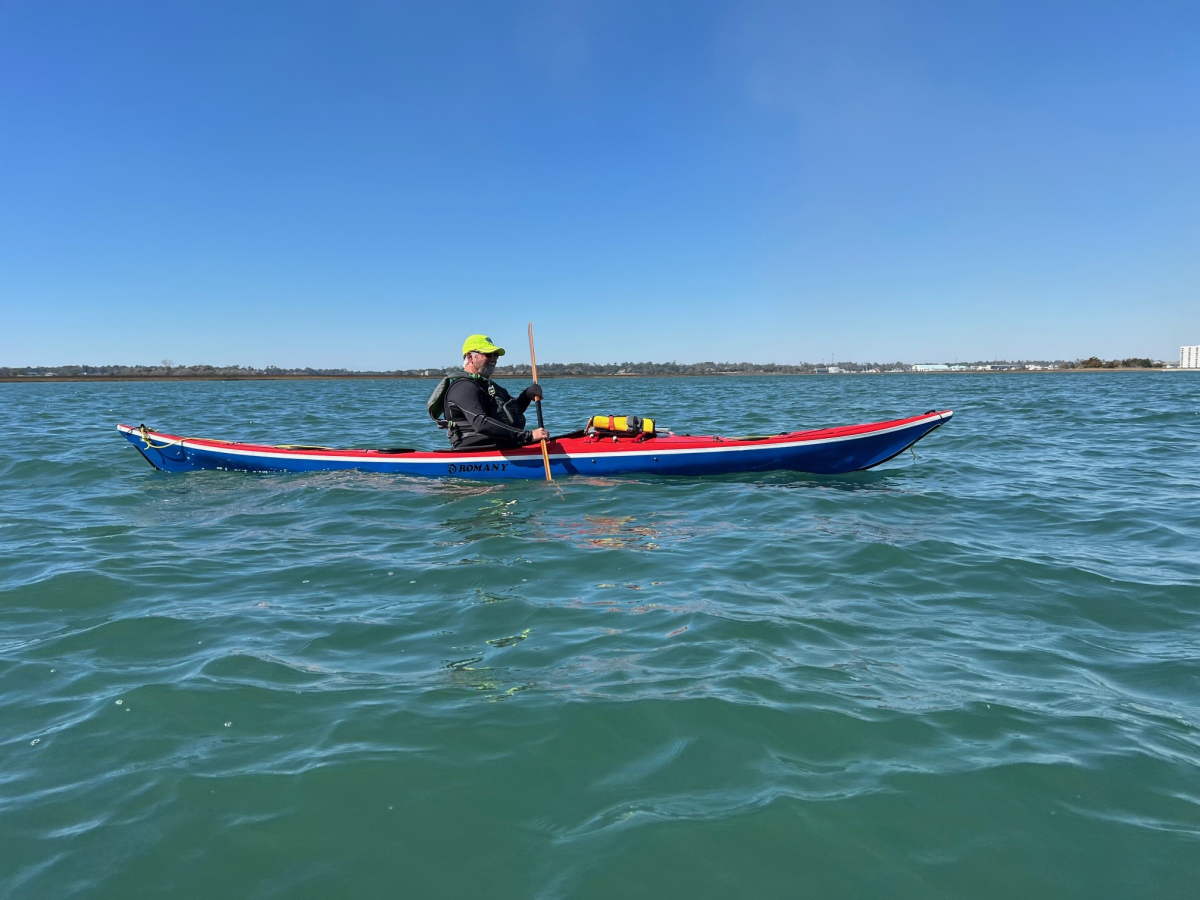For 60 years I have canoed all over the mountains of west North Carolina, east Tennessee, southwest Virginia and northwest Georgia. I paddled in creeks, rivers and lakes. Flatwater and whitewater. I was not particularly concerned about turning over. I had a boat full of flotation bags, a bailer, bow and stern painters and a throw rope. They always served me well.
Then about 15 years ago I got a cheap, roto-molded plastic sea going kayak. I did not even have a spray skirt or paddle float. A few times a year I would drive to the coast near Bogue Banks and Croatan National Forest to paddle my kayak in the creeks, lakes and estuaries. A few times, I carried a boat load of camp gear to paddle from Hammocks Beach State Park and spent several overnights on Bear Island. With this boat, I also did not worry about capsizing.
A few years ago, when I retired from living in the Blue Ridge Mountains and moved to New Bern near the coast, I found it to be a hot bed for kayakers. All of my life I have had a main sport, transitioning from backpacking, to volleyball, to tennis and so on. In New Bern, I made kayaking my new main sport and joined the Twin Rivers Paddle Club. In the club I met my good friend Bill Webb, who sold me a first-class British kayak. When I started paddling this good boat, some unknown factor flipped a switch in my brain, and I became conscious of how easily I could capsize, and how difficult it would be to get back in my boat.
When I later moved to Wilmington and met my special lady friend Janet Smith, I was happy to see that she was an avid kayaker and liked to go often. Now, I had painted myself into a corner. Kayaking was my main sport, and I was afraid to paddle for fear of turning over and getting stuck in the water.
So, for the next year and half, every time that I paddled, I carried the burden of worrying about staying upright. I attended several TRPC sponsored kayak rescue clinics, but each time I only observed. I was prevented from getting in the water due to several different physiological problems. I also watched numerous rescue videos, but seeing is different from doing. I was so frustrated that this Fall I asked a TRPC rescue instructor, John Burt, to do another clinic, just for me. He recruited another instructor, Terry Rich. I am grateful that they planned, organized and taught the class on December 21, at the New Bern YMCA pool. They also wisely opened the class to other students.
Several TRPC members participated with their boats in the water. Several more members attended to observe. A couple of the observers who had not seen me for 11 months, since I moved from New Bern, complemented me for losing 40 pounds in 11 months. That weight loss certainly helped me to hoist my still somewhat chubby torso out of the water and into my cockpit. The credit for reducing my body size goes to Janet, who is an expert on food, nutrition and calories. She is also demanding of me to get some hard exercise every day.
Besides being experts on all things about kayaks, paddling and rescues, John and Terry are super, super, nice men. We could not have asked for better teachers. Thank you, John and Terry. After the clinic, one of the instructors let me know that I had done well in the class, had successfully performed the skills and could do tandem and solo rescues. I felt like a great weight had been lifted off my shoulders.
My main problem was my seat back. Many years ago, I sprained my lower back muscles trying to learn a kayak eskimo roll. It was so bad that it took a year to heal. Since then, I have had a weak lower back. Consequently, I need a tall, stiff kayak seat back to help hold me up. My current kayak has such a seat back, which sticks up above the top of the cockpit rim. It gets squarely in the way when doing a self-rescue. Several times I dragged it forward with my chest and it lay down under me when I sat. It became literally a pain in my butt to get the back up and off the seat. A couple other times, I evaded this problem, but I had to make an extra effort to push up off the back deck with my arms to get over it.
I received several take-aways from this class. First, kayaks are designed to sit in calmly and paddle forward. When the boat gets tasked with other projects, like staying upright during the rescue of the paddler, or assisting the rescue of another paddler, then they get squirrelly. The paddler must keep constantly in mind a tool or procedure to provide balance, like an extended paddle, sculling or leaning on another boat. A paddler can be 95% through with a correct rescue action, and then forget for one second to keep a balance point, and he may go in the drink. Which means starting over. I know from wet experience.
The second take-away is that one lesson does not make an expert rescuer. This skill requires many lessons. If the Club sponsors a roll clinic this coming spring or summer, then I will participate. Also needed is much-repeated practice. And nearly daily physical workouts to keep our muscles, joints and cardiovascular systems in shape.
A good time was had by all.



